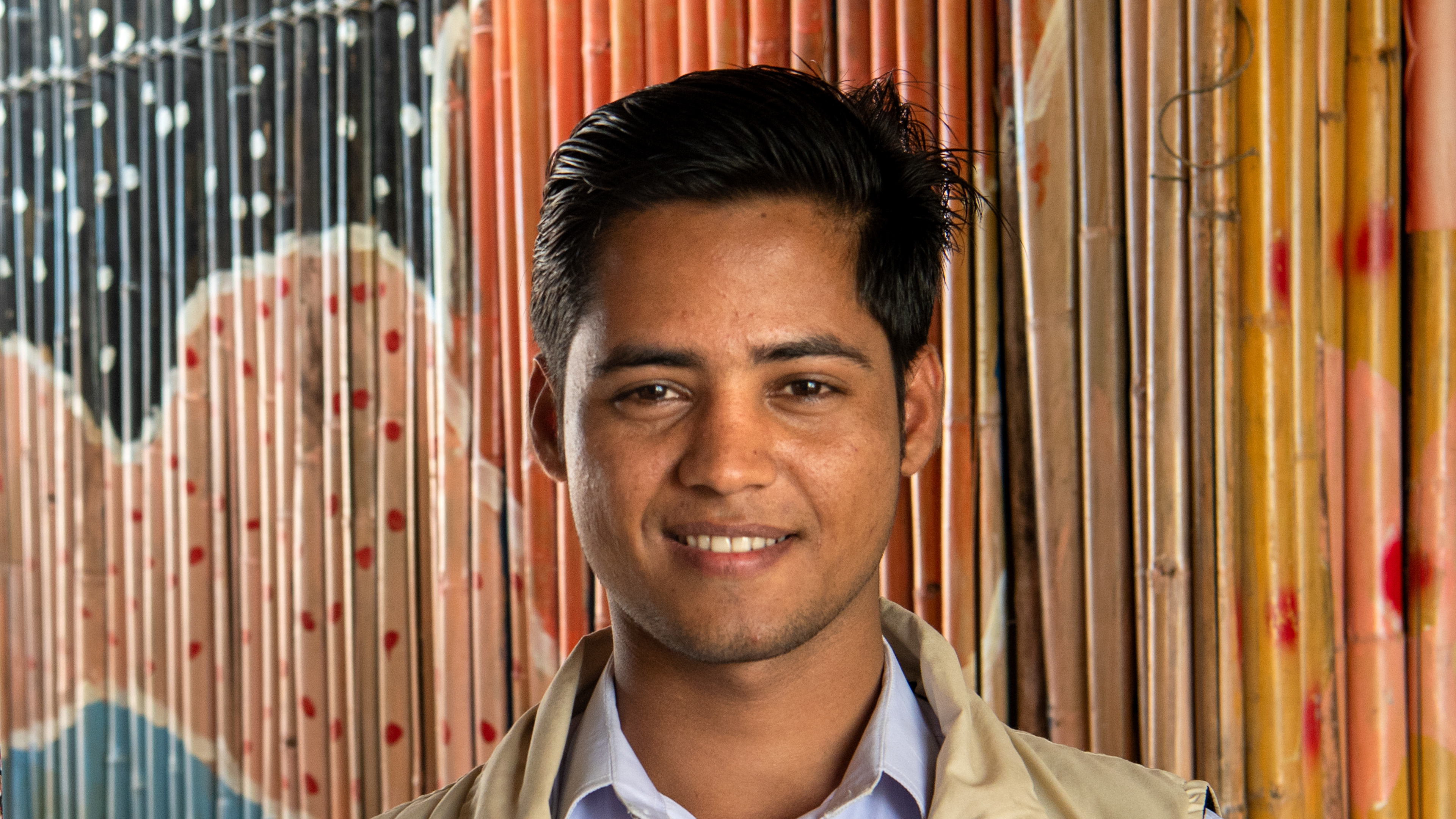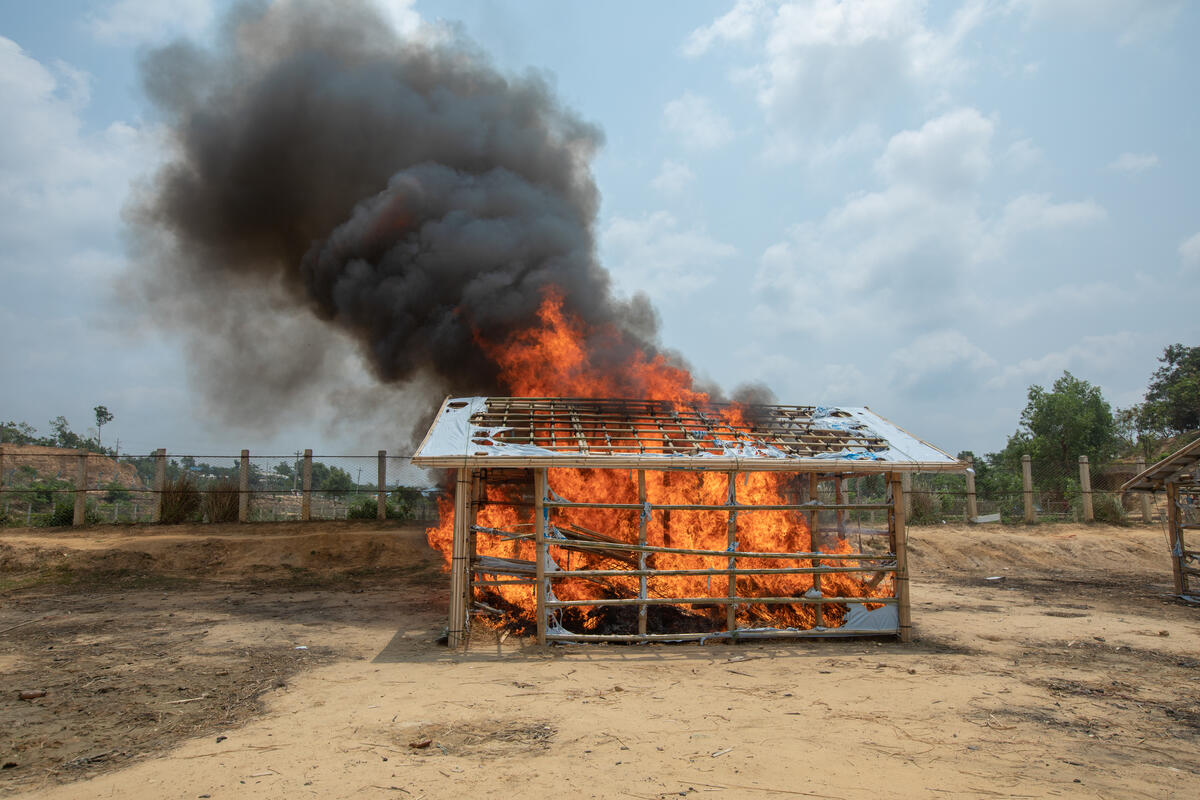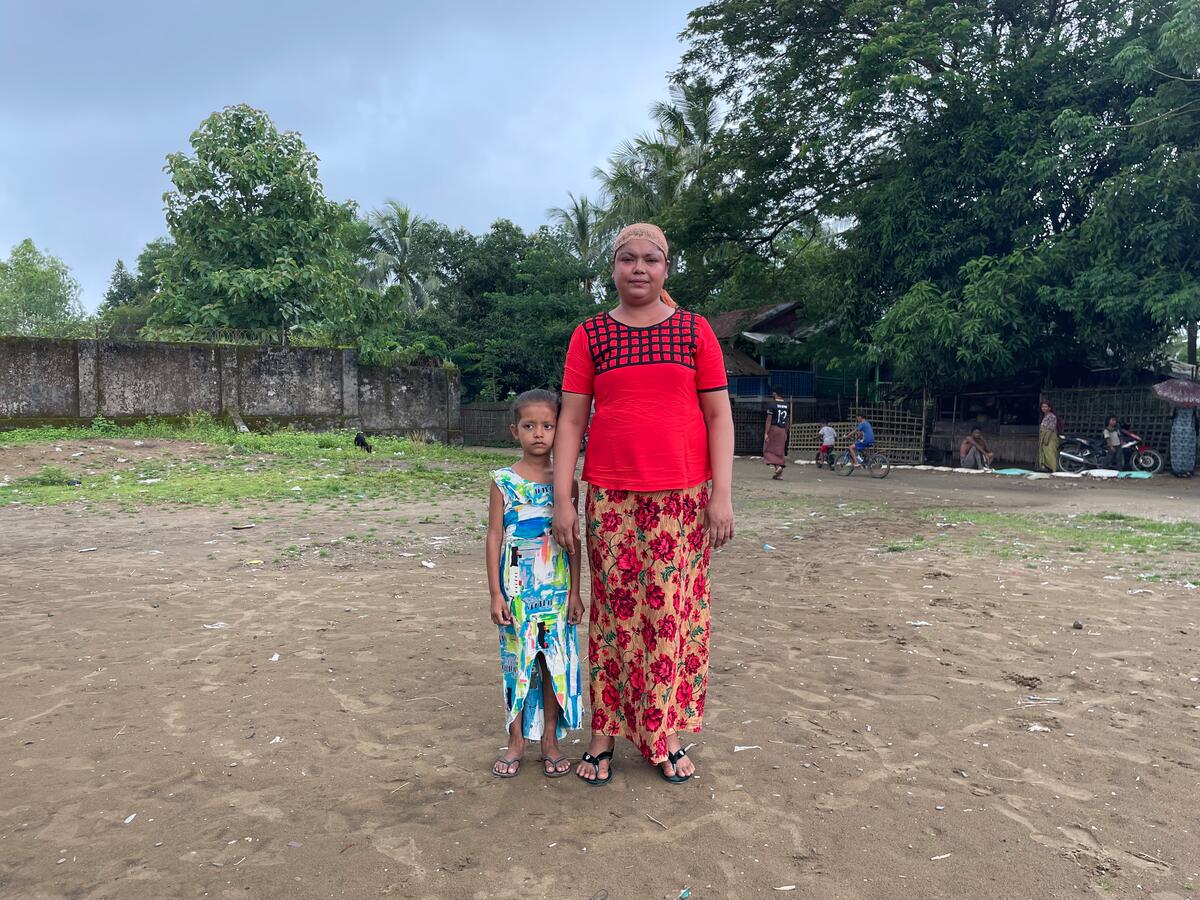Home-made rafts arriving from Myanmar / Refugee population density soaring
Home-made rafts arriving from Myanmar / Refugee population density soaring

Nearly three months into the Bangladesh/Myanmar crisis refugees are continuing to flee Myanmar, many by increasingly desperate means.
Over the past 10 days UNHCR, the UN Refugee Agency, has received reports of some 30 improvised rafts arriving from Myanmar, carrying more than a thousand people. Unable to pay for the crossing, refugees are building rafts from whatever material they can get their hands on – mostly bamboo poles and empty jerry cans tied together with rope and covered with plastic sheets. Using paddles made of bamboo and plastic debris some of these rafts made it to Shahporir Dwip in Bangladesh, a journey of about four hours. The Naf river estuary between the two countries is about three kilometres wide at this point.
More than 200 Rohingya refugees are known to have drowned in shipwrecks and boat incidents since the start of the crisis on 25 August. Recent arrivals told us they had been waiting for more than a month in desperate conditions on Myanmar’ shores. Food and water are said to be running low.
An estimated 620,000 Rohingya refugees have fled to Bangladesh since 25 August. The Kutupalong Extension site alone, which was set up soon after the influx began, is now highly congested, sheltering some 335,000 new arrivals – more than half of the influx so far. Currently 13 out of 20 blocks in the Kutupalong Extension area are more densely populated than parts of Dhaka. An area known as Block CC shelters more than 95,000 people per square kilometre (according to UN Habitat data, Dhaka’s population density is 44,500 people per square kilometre).
Despite concerted efforts to deliver more aid and services, the overcrowding and difficult living conditions in the camps and makeshift sites increase health, sanitation and fire risks as well as violence and trafficking.
There is an urgent need for additional land and more space for shelters and infrastructure to provide life-saving services and aid including water points, latrines, bathing areas, distribution points, child safe and friendly spaces, safe spaces for women and girls, community centres, etc. So far, UNHCR has delivered hundreds of thousands of aid items including tents, plastic sheeting, blankets, sleeping mats, mosquito nets, kitchen sets, buckets and jerry cans.
With the high refugee population density, protection risks rapidly escalate and in particular the risk for sexual and gender-based violence (SGBV). UNHCR is engaging all segments of the refugee communities in awareness raising and the prevention of SGBV. Together with our partners, we are working to put in place referral pathways for women, survivors of SGBV, as well as safe spaces for women and girls. Protection needs of adolescents – boys and girls – have to be consolidated within all humanitarian programmes.
For more information on this topic, please contact:
- Mohammed Abu Asaker in Cox’s Bazar, abuasake@unhcr.org, +880 18 7269 9849
- Mitra Salima Suryono in Cox’s Bazar, suryono@unhcr.org, +880 19 0620 0363
- Duniya Aslam Khan in Geneva, khand@unhcr.org, +41 79 453 25 08
- Andrej Mahecic in Geneva, mahecic@unhcr.org, +41 79 642 97 09









